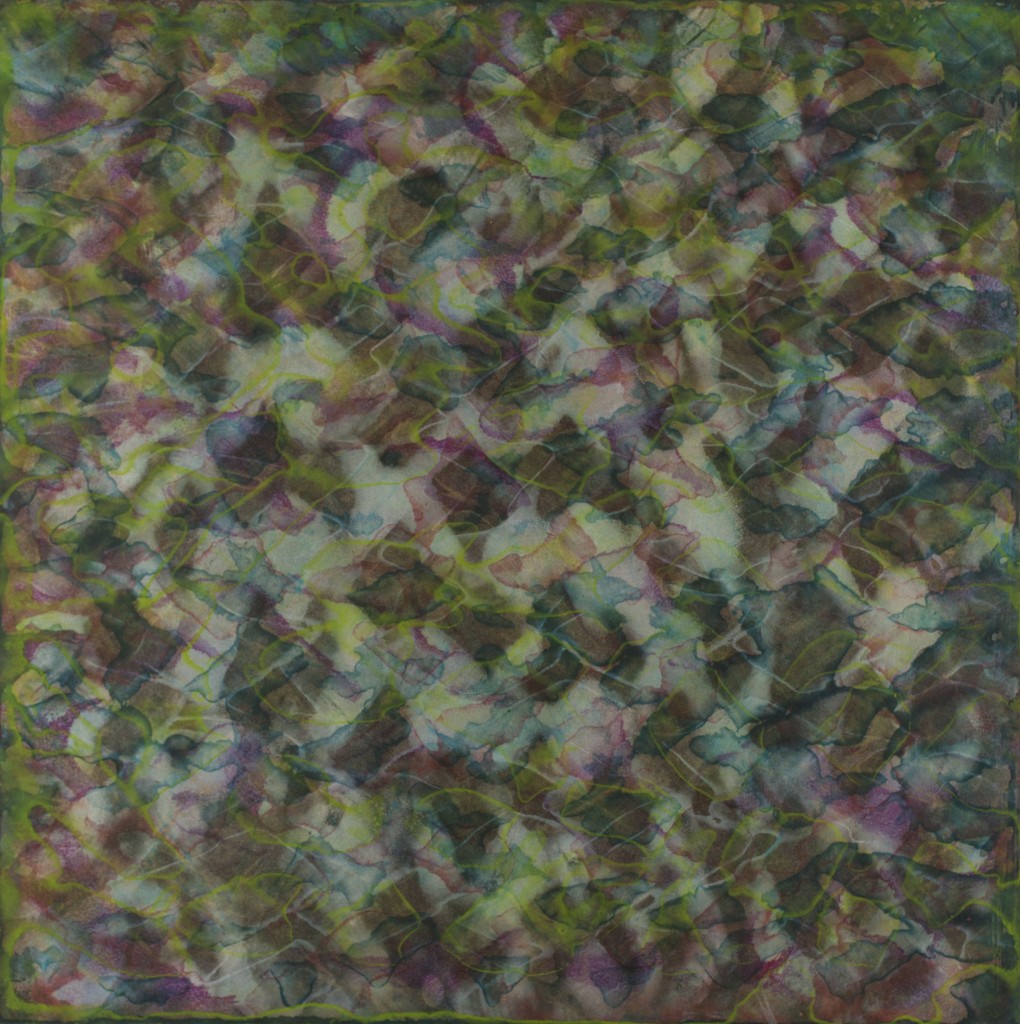
The scapes of time told in fluid painting
The paintings of Lynne Golob Gelfman deserve close attention and inspection, for their incredible subtleties of color and movement. In fact, while used to illustrate this posting, the paintings on this page do not do justice to Gelfman’s work, as it is important to see these pieces off the page and on the wall; in the best circumstances, in natural light.
Fortunately there are two opportunities to do just this, at the Frost Museum at FIU and in the Wynwood gallery of Alejandra von Hartz. The first exhibit is called “scapes,” and includes different sets of works in two rooms. In the entry room are examples of paintings that can resemble aerial views of ruins, inspired by a trip to North Africa. These dusty views are abstract yet with a distinct atmosphere, of desert landscapes pockmarked with ancient prints of civilization. Other paintings in the show evoke other elements, of water, light, skies, in various sizes, on canvas and wood, often set up in pairs.
From the “Dune” series at Alejandra von Hartz.
One small painting that sits as a bridge between the two rooms at the Frost may be the most dramatic example of the fluid nature of Gelfman’s work. It can literally change color, and seem to undulate like waves, depending on where you stand and the angle from which you view it. Although many paintings here conjure images of oceans and waves and the ever-changing ground of the sand beneath, one focal point in this show is the “dune” series, sparked by Gelfman’s trip to the awe-inspiring, barren land in northeastern Brazil, the Lecois Maranhenses, covered in white sand dunes that never stop moving and morphing. Like their counterparts in real life, in the dune paintings “the surface image changes with the slightest shift either in the viewer’s position or in the angle of light. These paintings, which are never the same nor fixed in time, offer and experience of perception – what happens when the viewer traverses the image.” During the day (when the museum is open), the exhibit on the top floor is bathed in natural light, which is the best way to experience the subtle changes in color and perception in these paintings (hint: watch for the metallic quality that arises depending on where you stand.)
A similar trip awaits at At Alejandra von Hartz, with “sand,” which includes older and newer works. Here again are shifting sands, rippling waves, morphing clouds – nature in transition, as it perpetually is.
“Scapes” runs through Sept. 2 at the Frost Museum of Art at FIU, 10975 S.W. 17th St., Miami; 305-348-2890; thefrost.fiu.edu. “Sand” runs through July 31 at Alejandra von Hartz N.W. 2nd Ave., Miami; 305-438-0220; www.alejandravonhartz.net.
Recent Content
-
Artsarticle ·
-
Artsarticle ·
-
Artsarticle ·

